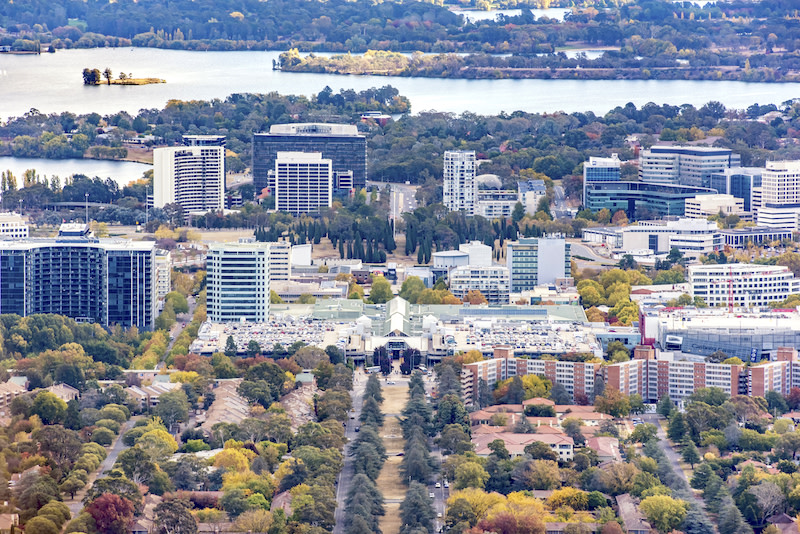Office Cost Efficiencies Overtake Flight to Quality

The office sector has had its share of woes during the past year but fresh data has revealed tenant interest remains a big part of the picture.
JLL Research has released its national office vacancy statistics for the fourth quarter of 2023, reporting that while demand was flat across 2023, nationally, tenant interest for high-quality assets led to rental growth.
It also found that the level of occupied office assets across Australia’s CBD markets did not change from 2022 to 2023, although the national vacancy rate increased by 0.7 percentage points during last year to its highest since 1995 at 14.9 per cent.
And while quality was a concern, there was a different nuance to what tenants were looking for, according to JLL research head for Australasia Andrew Ballantyne.
“The consistent theme across all office markets was strong occupier demand for the best-in-class assets and a willingness to pay a higher rent if the space can be designed in an efficient manner to reduce the cost per employee,” he said.
It was the most common factor across what was a varied set of results in office markets across the country, Ballantyne said.
“The variance in business sentiment and conditions are reflected across office markets with strong net absorption results recorded in Perth and Brisbane; while Melbourne and Sydney saw a contraction in occupied stock” he said.
The data shows 148,400sq m of prime-grade assets were absorbed, while there was a decrease of 148,800sq m of secondary grade assets taken up during the year.
This indicates tenants were moving to higher-quality assets, JLL said.
Office sector vacancy rates by capital city
Market | Q4,2022 | Q1,2023 | Q2,2023 | Q3,2023 | Q4,2023 |
Sydney | 14.0% | 13.7% | 14.4% | 14.5% | 14.4% |
Melbourne | 15.4% | 15.6% | 16.2% | 16.2% | 18.2% |
Brisbane | 13.9% | 13.6% | 12.6% | 11.5% | 11.1% |
Perth | 19.0% | 19.9% | 18.5% | 17.3% | 17.3% |
Adelaide | 16.5% | 16.1% | 16.0% | 15.8% | 18.0% |
Canberra | 7.0% | 7.8% | 7.1% | 8.0% | 7.8% |
Source: National Office Vacancy Statistics for Q4, 2023, JLL Research
Perth was the best performing office market with 75,400sq m of office assets taken up during 2023, indicating a vacancy rate fall to 17.3 per cent, the lowest since 2015.
“The resource sector is in expansion mode and was very active in the Perth market over 2023,” JLL office leasing head for Australia Tom O’Connor said.
“Strong demand for project space supports our view that the sector is planning for expansion over the medium term.”
Gross effective rents in the Perth CBD area increased by 2.4 per cent during 2023.
“As the number of options for prime grade contiguous space tightens, we expect to see a reduction in leasing incentives and prime gross effective rents increasing by closer to 5 per cent in 2024,” O’Connor said.
In Brisbane’s CBD, net absorption was 40,500sq m for a reduction in the vacancy rate to 11.1 per cent for 2023.
Vacancy rates for the prime-grade assets fell to 9.8 per cent and prime gross effective rents rose by 11.3 per cent.
“The Brisbane market is experiencing strong leasing enquiry and activity from a diverse range of industry sectors,” O’Connor said.
“Occupiers are aware that options are limited with the new developments at 360 Queen Street and 205 North Quay not scheduled to reach practical completion until 2025.”
The result for the sector in Adelaide’s CBD was 3.5 times higher than the 25-year average, its strongest since 2008 at 46,000sq m of net absorption.
This was due to many landmark assets reaching completion in 2023, however, 65 per cent of Adelaide’s office assets are more than 30 years old and need upgrading.
Prime grade absorption was 55,900 sq m with a drop of 9900sq m for secondary grade assets.

Sydney’s CBD had a negative net absorption of -64,100sq m for 2023 with location key as its core precinct recorded 23,600sq m of net absorption while the rest of the CBD had a negative net absorption of 87,800 square metres.
“Strong leasing activity in the core precinct has led to upward pressure on market rents for the best quality buildings, mirroring the trend experienced in other gateway cities,” Ballantyne said.
“In the Sydney CBD, average prime gross effective rents increased by 3.9 per cent over 2023.”
The Melbourne CBD recorded a negative net absorption of 71,200sq m for 2023, which Ballantyne attributed to an increase in sublease availability during the year.
Canberra’s vacancy rate remained the tightest of the nation at 7.8 per cent but it recorded negative net absorption of 27,000square metres.
“Headline vacancy statistics can be misleading,” O’Connor said.
“If you look across Australia’s CBD office markets, almost two-thirds of vacancy is held in just 17 per cent of buildings.
“A high proportion of these assets will require significant capital expenditure, or they will experience an extended period of elevated vacancy.”
But assets that have sustainability credentials making them more efficient will be successfully leased, according to O’Connor.
“Limited availability for high-quality buildings with superior sustainability credentials and a moderation in new supply during the next three years creates an environment for the highest quality assets to experience further rental growth,” he said.















